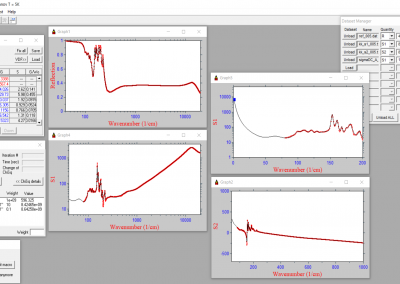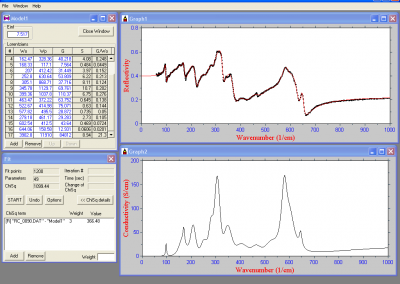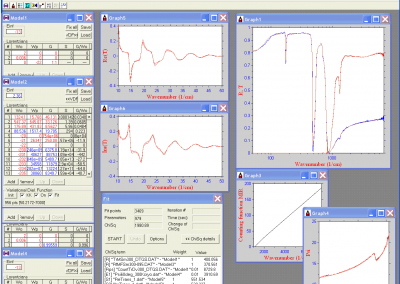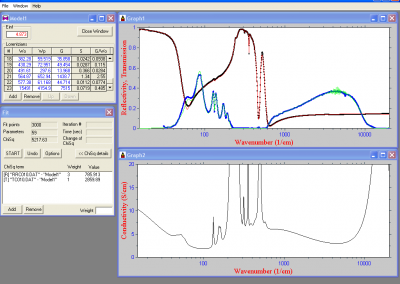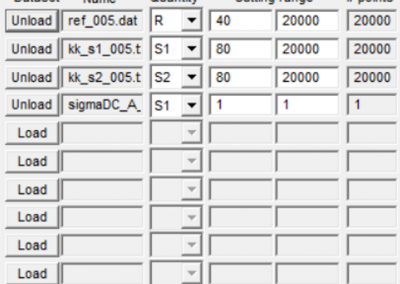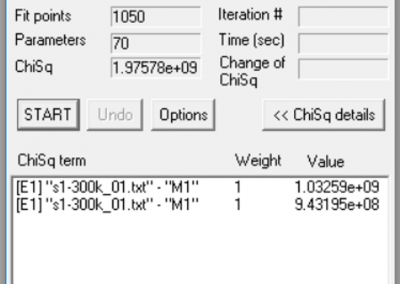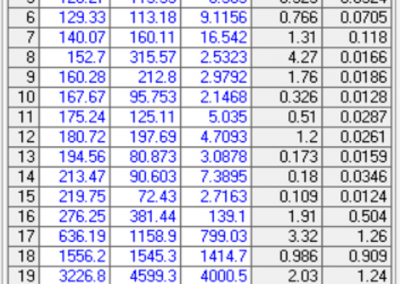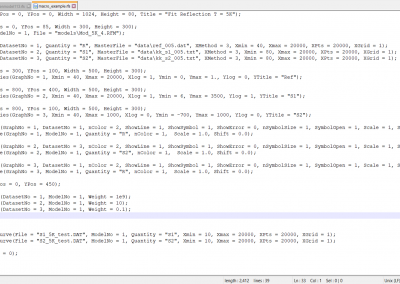Welcome to RefFIT
Fast fitting, modeling and Kramers-Kronig transformations of optical spectra

RefFIT is now app.speqqle! 🚀
We’ve launched our new platform app.speqqle.com — and you’re invited to try it.
Everything you know and love about RefFIT is there — just faster, smoother, and ready to grow into something amazing.
👉 Launch app.speqqle nowNeed access to the legacy version of RefFIT? Contact us via the contact form in the menu.
RefFIT is a data analysis program written by dr. Alexey Kuzmenko using the input and feedback from many colleagues over many years. It is designed to fit optical spectra, such as reflectivity, transmission, ellipsometry and Kerr and Faraday rotation using the Drude-Lorentz, Fano, Tauc-Lorentz and many other dielectric-function models. Currently the library includes more than 50 models. In addition to the rich model library, RefFIT allows you to apply a model-independent Kramers-Kronig analysis to virtually any type of optical spectra, using an original Kramers-Kronig constrained variational technique.
RefFIT has a powerful and fast fitting engine based on a modified Levenberg-Marquardt algorithm, a broad collection of proven physical models and a unique user-friendly interface. It allows you fitting manually or automatically several datasets of different type and using different models simultaneously while seeing on your screen precisely what you are doing.
Our users include physicists, material scientists, chemists, optics engineers, biologists and even computer-game designers. Also teachers use RefFIT in their courses: students can not only study the optical properties of materials, they themselves can play, model and fit as well.
Peer reviewed papers citing RefFIT (web of knowledge, August 2025)
An overview of the software
User interface
- multiple models, multiple data sets
- arbitrary number of oscillator terms
- multiple graphs with many curves
- fast and continuous graphical updates
- curve tracing
Fitting engine
- optimized, fast Levenberg-Marquard algorithm
- multiple experiments fitted simultaneously
- multiple models fitted simultaneously
- up to a thousand adjustable parameters
- anchoring parameters to each other
Macro language
- easy to program
- allows running big fitting tasks
- reproducing analysis from the keyboard
- loops for treating many data sets
- easy sharing of data analysis procedures
The scientific models
Kramers – Kronig Analysis
- model independent KK analysis can be applied to any type of optical experiment, material and sample
Experiments
- absolute reflectometry, transmission
- ellipsometry
- magneto-optical spectroscopy
- DC resistivity, Hall effect
Optical functions
- reflection, transmission
- ellipsometric parameters (psi, delta, …)
- dielectric functions, optical conductivity
- refractive index
- loss function
- optical penetration depth
- optical spectral weight
Dielectric – function models
- Drude – Lorentz
- Tauc – Lorentz
- Fano – shaped excitations
- Drude + electron – phonon interaction
- extended Drude
Materials and optical excitation
- metals, semiconductors, insulators, semimetals
- molecular vibrations, phonons
- free-electron absorption (Drude)
- interband transitions
- magnetic resonances
Types of samples
- bulk crystals, thin films, multilayers
- powders
- anisotropic samples
- meta materials, left-handed materials

